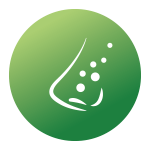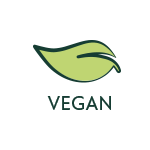- BUY
- Nasal spray basing on natural ingredients without habituation effect
- Use of Nasal Wash
- Ingredients of Nasal Wash
- *Clinical studies on Nasal Wash
- Specification
Nasal spray basing on natural ingredients without habituation effect
 Nasal Wash ideal for daily nasal hygiene and for the treatment of allergies, colds and sinusitis.
Nasal Wash ideal for daily nasal hygiene and for the treatment of allergies, colds and sinusitis.
The nose is constantly in contact with a large amount of allergens, impurities and pollutants. Keeping it free and clean is therefore the first step in preventing alterations to the nasal mucosa (blocked nose, itching, dryness) and enabling the correct passage of air through the airways.
*Five recent clinical trials on adults and children using a saline solution enriched with hyaluronic acid have shown that Otosan nasal rinse accelerates the healing process and is significantly more effective than rinses based on saline alone.

Otosan® Nasal Wash provides relief for
- nasal congestion
- colds and allergic rhinitis
- acute and chronic sinusitis
- hypertrophic rhinitis during pregnancy
- snoring
- exposure to dry or polluted environments, smoke or other pollutants in the air
- surgical interventions, before and after
- daily cleaning of the nasal cavities
The advantages at a glance
- natural salt water solution (1.1%)
- with sodium bicarbonate (balances the pH value between 7 and 9 and thus promotes mucociliary transport)
- with hyaluronic acid (mucolytic, hydrating and protective properties)
- promotes cleansing of the nasal mucosa
- promotes mucociliary transport
- improves breathing
- prevents the accumulation of secretions and the resulting contamination process
- vegan
Content: Bottle + 30 Sachets
Otosan® Nasal Wash is a medical device. For use and further information, please read the package leaflet.
Use of Nasal Wash
- Fill the container with lukewarm drinking water (approx. 35-40°C) up to the 240 ml line
- Pour the contents of 1 or 2 sachets into the water: isotonic or hypertonic solution. (*see: Frequently asked questions)
- Shake the container to mix the solution with the water
- Tilt your head slightly forwards, lean over the sink and hold the container in a vertical position
- Insert the tip of the container into one nostril and breathe through your mouth
- Squeeze the container gently and wait until the solution flows into your nostril and out of the other. Breathe with your mouth open during cleaning. Then remain bent over the sink for a moment
- Repeat the same procedure with the other nostril
- Blow your nose beforehand
- Clean the container thoroughly after each use. To do this, fill it with water and a little liquid soap and shake it vigorously. Then rinse it out and dry it carefully
- It is recommended to replace the container every 3 months
Ingredients of Nasal Wash
<p><img class="imgright" src="https://www.functional-cosmetics.com/out/pictures/ddmedia/content/Otosan/Bio-Organic.png" alt="Bio Inhaltsstoffe"> </p><ul><li>Otosan® Nasal Wash contains 30 sachets of salt water solution enriched with sodium bicarbonate and hyaluronic acid (International PATENT pending)</li><li>The saltwater solution with a concentration of 1.1% flows through the nasal cavities, thoroughly cleansing the cavity and thus helping to dissolve the bacterial biofilm</li><li>The sodium bicarbonate is used to balance the pH of the saline solution between 7 and 9 and thus promote mucociliary transport</li><li>Hyaluronic acid is a polysaccharide with mucolytic, hydrating and protective properties</li></ul>*Clinical studies on Nasal Wash
Studies on the benefits of nasal wash:
- Melissa A. Pynnonen, MD; Shraddha S. Mukerji, MD; H. Myra Kim, ScD; Meredith E. Adams, MD; Jeffrey E. Terrell, MD. Nasal Saline for Chronic Sinonasal Symptoms. A Randomized Controlled Trial. Arch Otolaryngol head neck surg/vol 133 (no. 11), Nov 2007.
- Blake Papsin, MD, FRCSC Alison McTavish. Saline nasal irrigation. Its role as an adjunct treatment, MSCCanadian Family Physician. Le Médecin de famille canadien Vol 49: FEBRUARY 2003.
- Rabago D, Zgierska A. Saline nasal irrigation for upper respiratory conditions. Am Fam Physician. 2009 Nov 15;80(10):1117-9.
- Hermelingmeier KE, Weber RK, Hellmich M, Heubach CP, Mösges R. Nasal irrigation as an adjunctive treatment in allergic rhinitis: a systematic review and meta-analysis. Am J Rhinol Allergy. 2012 Sep-Oct;26(5):e119-25.
Studies on the addition of hyaluronic acid:
- Macchi A., Terranova P., Digilio E., Castelnuovo P. Hyaluronan plus saline nasal washes in the treatment of rhino-sinusal in patients undergoing endoscopic surgery. International Journal of Immunopathology and Pharmacology., Vol. 26, no. 1, 137-145, 2013.
- Macchi A., Castelnuovo P., Terranova P., Digilio E. Effects of sodium hyaluronate in children with recurrent upper respiratory tract infections: results of a randomised controlled study. International Journal of Immunopathology and Pharmacology., Vol. 26, no. I, 127-135, 2013.
- Revello F., Valutazione clinica Otosan Nasal Wash, Torino, Italia, 2018.
- Gelardi M. et al., Effect of sodium hyaluronate on mucociliary clearance after functional endoscopic sinus surgery. Eur Ann Allergy Clin Immunol, Vol. 45, no. 3, 103-108, 2013.
- Garantziotis S. Brezina M, Castelnuovo P., Drago L. The role of hyaluronan in treatment of respiratory diseases, Am J Physiol Lung Cell Mol Physiol 310: L785-L795, 2016.
- Fragrance
- Without Perfume
- Use
- When needed
- Application Area
- Nose
- Product Type
- Nasal Wash
- Dosage Form
- Pouder
- Brand
- Otosan®
- Subject Area
- Cleaning of nose
- For
- Women & Men
- Volume
- Bottle + 30 sachets
- Refund Warranty
- No
 Deutsch
Deutsch
 English
English




